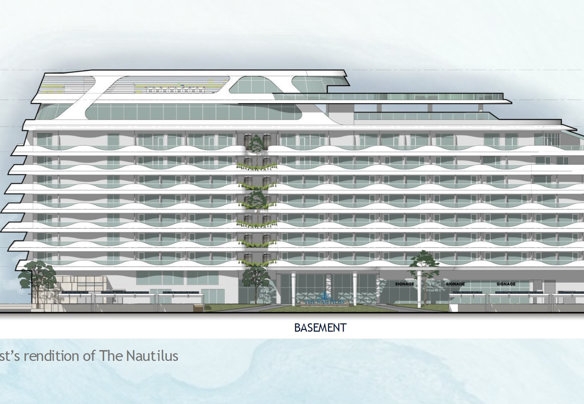Retiring in the Philippines: Pros & Cons By Jean Folger | Updated August 23, 2016 — 12:00 PM
Each year, InternationalLiving.com’s Global Retirement Index ranks the top 25 retirement destinations in the world, based on factors like climate, healthcare, fitting in, benefits and discounts, and cost of living. The Philippines – an archipelagic country of 7,000+ islands – made the 2016 list, scoring especially well in the Fitting In and Entertainment & Amenities categories.
Though the Philippines is still a low-cost country, it doesn’t currently rank at the very cheapest level for Cost of Living; that honor belongs to Cambodia, which got 100 of a possible 100 points. For 2016, the Philippines earned 85 – the same score as Portugal and the Dominican Republic. (Nicaragua came in second, at 95.) The country also scored 92 for “Fitting In” (is English spoken, are locals welcoming, is there an expat community, etc.), putting it in the top half of the list. (Only Honduras (Roatan) scored a perfect 100; Belize and Ireland got 98.)
For most people, the decision to retire abroad is a difficult one, and it can be even more of a challenge to decide where to settle down. With the world the way it is, issues of safety are of increasing concern, along with costs. The recent anti-drug violence in the Philippines (see Safety concerns) should be factored in with other issues.
Here, to get your research started, are some of the pros and cons of retiring in what is considered one the world’s best retirement destinations: the Philippines.
Here are the Pros
Low cost of living
Many choose to retire overseas in order to find a lower cost of living. The Philippines doesn’t disappoint, and most expats can live comfortably on about $800 to $1,200 a month – including dining out and in-country travel – according to InternationalLiving.com. The average retired U.S. worker’s Social Security benefit is $1,348.49 per month as of June 2016, which means your monthly benefit alone could be enough to cover your basic living expenses in the Philippines. An added perk: Household help is very affordable, so it’s possible – even on a tight budget – to hire someone to help with the cooking and cleaning. For more, see Retire in the Philippines with $200,000 of Savings?
Expat Incentives
The Philippines welcomes expats, and even has a government agency dedicated to attracting foreign retirees. Expats here receive a number of financial benefits, including discounts for the 60+ crowd, the duty-free import of $7,000 worth of household goods and exemption from airport travel taxes. In addition, expat residents are allowed to work or start a business. Also helpful: Once you have permanent residency, you can stay in the Philippines for as long you like (your retiree visa does not expire), and you can leave and return without reapplying for residency.
Beautiful Setting
The Philippines is known for its tropical climate and natural beauty. From the tops of its lush mountains to its colorful coral reefs – and everywhere in between – it’s easy to be in awe of your surroundings almost anywhere in the country. Its many beaches (remember those more than 7,000 islands) are perhaps the biggest draw: Places like Boracay in Aklan, with its white sand and crystal clear blue water, and El Nido in Palawan, a richly biodiverse area where limestone cliffs rise from the sea, attract people from all over the world.
What are the Cons
Infrastructure Problems
In recent years, the Philippines has been one of Asia’s fastest-growing economies, but problems with infrastructure could hold the country back. According to a recent World Economic Forum Global Competitiveness Report, infrastructure problems are the leading economic obstacles the country faces. What does that mean to expats? Depending on where you live (its 2016 International Living ranking for infrastructure is 89), you could experience power failures, prolonged water shortages, outdated telecommunication systems, and deteriorating bridges and roads.
Healthcare
Although expats have access to excellent and affordable healthcare in Manila, the country’s capital (International Living’s 2016 list ranks the country 88 for healthcare), some areas in the Philippines don’t offer the same level of care, lacking both infrastructure and investment. This can be especially problematic for expats who have chronic conditions that require regular treatment, or who have conditions that would be considered out of the ordinary.
Safety Concerns
The most recent violence issue is the campaign against drugs launched since President Rodrigo Duterte came to office on June 30, 2016, that had resulted in more than 1,900 deaths (about 36 per day, according to Reuters) as of August 23. The Philippine senate is investigating the deaths, and President Duterte has told legislators not to interfere, warning that they could be killed if they blocked actions directed to improving the country, Reuters reports.
Interestingly, the “Security Message for U.S. Citizens: Security Reminder,” dated August 17, 2016, and released by the U.S. Embassy in the Philippines did not mention the drug killings. It cautioned: “Extremists have targeted sporting events, theaters, markets, mass transportation systems – including airlines, and other public venues where large crowds gather. Crowded nightclubs, shopping malls, buses and popular restaurants have also been targets,” and directed Americans “to review the information in the most recent Philippines Travel Warning.”
As that warning (issued on April 21, 2016) notes, some regions of the Philippines pose a greater risk than normal because of continued violence linked to insurgency and terrorism. It specifically cites the Sulu Archipelago, the island of Mindanao and the southern Sulu Sea area. Other regions in the Philippines are generally considered as safe as other places in Southeast Asia (see How Safe Is Traveling in the Philippines?).
Note: U.S. citizens traveling to or residing in the Philippines are encouraged to enroll in the Department of State’s Smart Traveler Enrollment Program (STEP), which provides security updates and makes it easier for the nearest U.S. embassy or consulate to contact you and/or your family in case of an emergency.
The Bottom Line
The Philippines is home to a well-established community of expats who have retired overseas in search of a better climate, change of scenery, new cultural experiences, affordable healthcare and a lower cost of living. The Filipino people are very warm and welcoming to foreigners, and the country offers a number of incentives to retirees.
Making the decision to retire abroad – and figuring out where to go – are difficult steps that take lots of research and planning. Like every other country that might be on your list of potential retirement spots, the Philippines has both its pros and cons. Each should be carefully evaluated before making any decisions.
It’s a good idea to visit the area, preferably more than once, before making any decisions. Try to visit from a resident’s perspective, rather than as a tourist.
Read more: Retiring in the Philippines: Pros & Cons | Investopedia http://www.investopedia.com/articles/personal-finance/041315/retiring-philippines-pros-cons.asp#ixzz4aCrpSk8i



